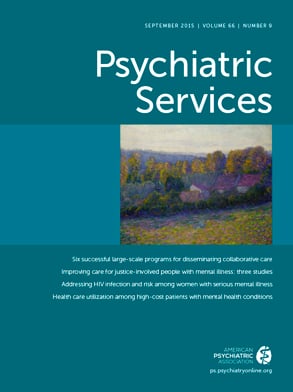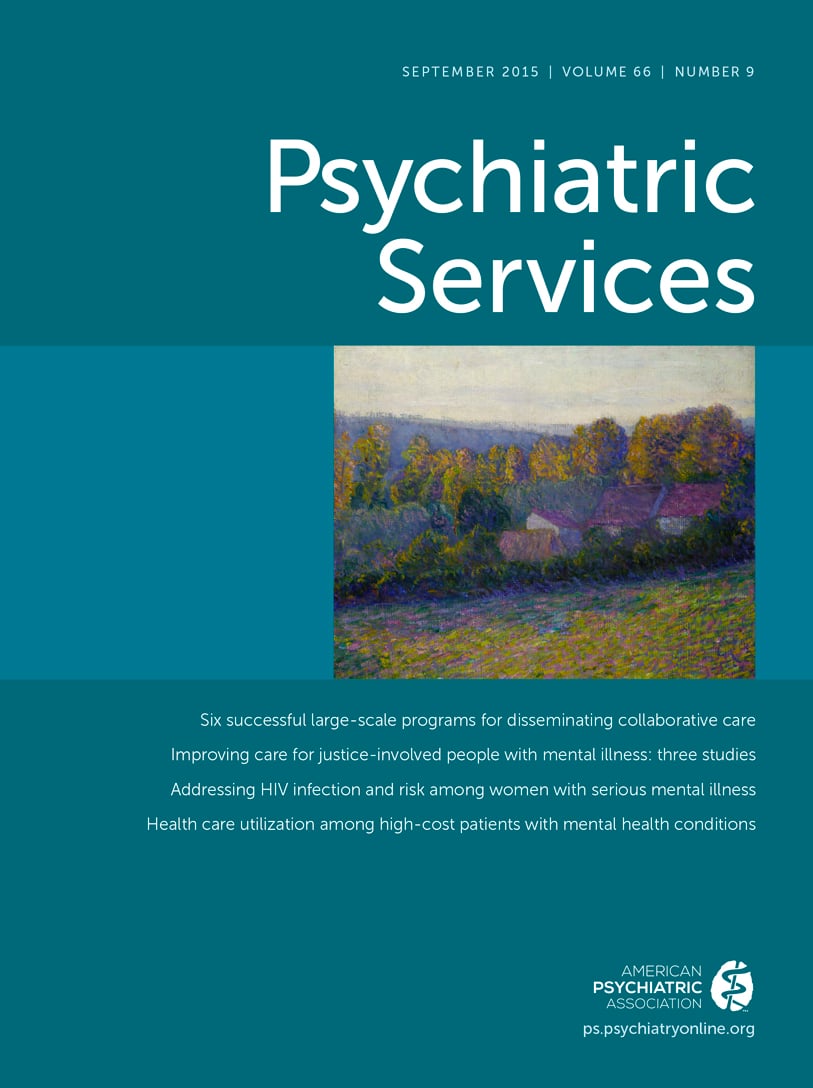Out of 500 relevant papers retrieved, 82 have been included, based on their state-of-the-art findings.
Interventions to Reduce HIV Risk
Currently, as a measure of prevention, many mental health facilities offer educational group sessions that address sexually transmitted diseases, including HIV. The groups have been shown to increase clients’ knowledge, but in the reports, education does not always translate into behavior change (
25). It has been recommended that educational sessions for women include, in addition to details about HIV transmission, facts about prevention and treatment of bacterial vaginosis, a commonly occurring infection that causes inflammation of the female genital tract, increasing susceptibility to HIV infection (
26). It has also been recommended that mental health facilities take responsibility for facilitating access to both male and female condoms and provide training on five condom-related behaviors: accessing, carrying, negotiating, using, and disposing (
27). Although the situation may have changed, in 2007 few mental health programs distributed condoms to clients. Only 10% did so on an anonymous basis; another 20% provided condoms only if prescribed by a physician (
28).
A comparison has been made of cognitive-behavioral therapy (CBT) and standard health promotion techniques with respect to reducing HIV risk (
29). In this study, CBT prevention techniques included provision of HIV-risk information, motivational enhancement, and information about risk-reduction behavioral skills tailored for persons with serious mental illness. After six months, knowledge regarding HIV transmission and risk reduction increased following both interventions. There were no overall gains in personal attitudes toward condom use, but skills in using condoms increased in the CBT group. Major risk behavior outcomes among women, however, such as the proportion of vaginal sex that was unprotected or the number of sexual partners, were not affected by either treatment condition, highlighting the need to find new ways to change risk behavior.
As mentioned above (
17), many women need training in communication and assertiveness skills designed to convince male partners that condom use is necessary (
30). Such skills, once taught, appear to require repeated review in order to maintain gains. Female condoms bypass the need for the cooperation of the male partner, but health care providers have not often recommended them, perhaps because of their own unfamiliarity with their use (
31). The literature points out that the female condom has disadvantages. It is detectable when in place, so men who react negatively to male condoms—perceiving them as a mark of distrust, a means of diminishing male pleasure, or an indicator of a woman’s infidelity—may object. The female condom is also costly. Other reported reasons for its relatively low uptake have been its appearance, which may be considered a “turn off”; difficulty with insertion; a rustling noise during intercourse; and occasional discomfort and slippage (
32,
33).
An intervention study conducted in an Alabama sexually transmitted diseases clinic found that the prevalence of insertion difficulty associated with use of a female condom substantially decreased after participants were able to practice on a pelvic model and were given opportunities to insert the device and receive feedback by a nurse (
34). Similarly, another study found that female condom breakage and slippage rates significantly declined with increased use of the device; after more than 15 instances of use, combined failure rates fell from 20% to 1.2% (
35). The efficacy of the female condom in preventing HIV transmission via anal intercourse has not yet been fully explored (
36).
Antiretroviral therapy pills and vaginal microbicide gels and rings for primary (before sex) and secondary (after sex) prevention of HIV are becoming increasingly available. However, their use is complicated by insufficient efficacy data, relatively low availability, high cost, need for medical supervision, and a requirement that the user maintain adherence over lengthy periods of time. Medicinal vaginal products may inflame vaginal tissue and, paradoxically, facilitate entry of HIV; thus they are not for everyone. There are also public health concerns about whether use of these new methods could facilitate resistant strains of HIV or undermine condom promotion (
16,
37). A combination of preventive methods has been advocated for use until the expected advent of a safe and effective HIV vaccine (
38).
Because 70% to 80% of individuals diagnosed as having severe mental illness experience varying degrees of cognitive impairment that interfere with their ability to make satisfactory decisions (
39), an additional way of reducing HIV risk in this population is to improve clients’ cognitive skills through cognitive remediation (
40). Cognitive remediation has been found to be especially effective when baseline deficits are relatively greater (
40).
Programs that promote adherence to antipsychotic medication, such as motivational interviewing and compliance therapies, and community treatment orders that monitor treatment adherence all help to combat symptoms of psychosis and may, therefore, improve adherence to the practice of safer sex. Because substance use disorders are common among persons with serious mental illness (
41) and because they undermine judgment and contribute to risky sexual practices, treating these disorders is important for HIV prevention. Persons with co-occurring disorders (mental illness and substance use disorders) are at high risk of HIV if the individuals are not identified and the substance use disorder is not treated early. Injection drug use is a special concern with respect to HIV transmission; referral to sites where clean needles and syringes can be obtained has been recommended (
42).
With respect to screening, the Centers for Disease Control and Prevention recommends annual HIV testing for individuals at high risk (
43). Women with serious mental illness, although acknowledged to be at high risk, are not usually offered yearly HIV tests through their mental health service provider. A 2009 review found that fewer than half (17%−48%) of individuals who used mental health services were tested for HIV in any given year (
44). There are thorny ethical problems involved in the implementation of screening programs in mental health settings, the primary problem being a perception that targeted screening further stigmatizes an already stigmatized population. A second issue is whether consent can be truly free and truly informed in mental health settings, given that some clients have impaired cognition and inadequate knowledge and imperfect understanding of the implications of screening and that health care staff may exert considerable social pressure on patients to comply. There is also a question about using incentives to HIV testing, which may be perceived as coercive (
45). Another issue related to the use of screening programs is the virtual impossibility of guaranteeing anonymity of test results because clients talk among themselves about each other. A still more complex issue for staff is whether to disclose a client’s positive results to actual or potential sexual contacts. The debate is whether warning third parties overrides the duty to maintain confidentiality.
A recent study addressed some of the problems related to the use of screening. Persons who were receiving psychiatric inpatient treatment (N=105) in central London (36% of whom were female) were approached for a study of widespread screening for HIV and other blood-borne viruses (hepatitis B and C). Eighty-three percent of those approached were judged to have the mental capacity to provide informed consent for testing. Among persons who were offered the testing, 63% accepted, and of those, 18% had serological evidence of a current or previous blood-borne infection. Three percent tested positive for HIV (
46). The investigators concluded that educational interventions require several sessions to improve clients’ capacity to consent and suggested that it is possible to integrate testing for blood-borne disease into standard clinical procedure (
28).
Drug Treatment
A person with two chronic illnesses, such as psychosis and HIV, has the burden of indefinitely managing two sets of complex drug regimens. The consequences of using both antipsychotics and highly active antiretroviral therapy (HAART) are a major clinical concern because each regimen is associated with side effects. In addition, there is the potential for interactions between the two sets of drugs, and there are difficulties associated with adherence to two complicated drug regimens (
47–
49).
Both antipsychotic drugs and HAART can induce neuromuscular and metabolic side effects. The peripheral neuropathy effects of nucleoside reverse transcriptase inhibitors can increase the severity of extrapyramidal effects of antipsychotics (
50). Many antipsychotic drugs promote obesity, diabetes mellitus, cardiovascular risk, and metabolic syndrome (
51), which are aggravated by the addition of HAART. As a result of the concomitant use of second-generation antipsychotics and long-term antiretroviral therapy, there is an increase in central fat, especially among women, that has been associated with increased cardiovascular risk (
52).
Another concern related to the use of psychotropic and antiretroviral drugs is the possibility of drug interactions (
53). Psychotropic agents and HAART interact through their joint metabolism by cytochrome P450 isoenzymes, especially CYP3A4, CYP2D, and CYP2C9 or 2C19, but also CYP1A2 (
54). The National Institutes of Health (
55) constantly updates its Web site with information about interactions between existing drugs and newly developed HAART regimens. Currently, it is posting a warning about an interaction between some HAART regimens and the antipsychotic medications pimozide and quetiapine. Complementary medicines, such as herbal remedies, may also interact with HAART drugs (
56) and with antipsychotic drugs (
57).
Lifelong adherence to medication is critical both for psychosis and for HIV infection, despite inconvenient medication regimens and adverse side effects. Some patients experience treatment fatigue, defined as decreased motivation among long-term patients to adhere to an ongoing treatment regimen (
58,
59). Paradoxically, although ongoing adherence to antipsychotic medication among persons with serious mental illness is low (
60), it was shown to improve by sevenfold among persons who also took medication for a comorbid medical illness (
61). By the same token, HIV-positive patients with psychiatric disorders have been found to be more likely to adhere to HIV treatment during periods of regular mental health service attendance (
62,
63). Various adherence therapies have been found useful, including CBT, motivational interviewing, cognitive adaption training, and general psychoeducation. Support services, such as arranging transportation to pharmacies and obtaining insurance benefits, have also been found effective in addressing some of the logistic barriers that interfere with adherence (
64).
Psychosis Secondary to HIV
Individuals with psychosis may develop HIV, but individuals with HIV may also develop psychosis as a result of brain infection or the side effects of HAART. As many as 15% of HIV-infected patients may experience new-onset psychosis (
86). These psychoses are usually characterized by the presence of relatively unstructured paranoid delusions and by impaired attention and concentration, without affective symptoms (
87). Older women appear to be particularly at risk (
88). Among antiretrovirals, a nonnucleoside reverse transcriptase inhibitor—efavirenz—is perhaps the most responsible for CNS toxicity, causing insomnia, irritability, and vivid dreams—symptoms usually described as mild or moderately severe and time limited (
89). Nucleoside reverse transcriptase inhibitors, however, particularly zidovudine and abacavir, have been associated with frank psychosis.
Notably, 40% to 50% of HIV patients experience neurocognitive difficulty even when treated with HAART. The difficulty can range from relatively mild to very severe. HIV-associated neurocognitive disorders are related to host factors, such as genetic predisposition, metabolic disorders, cardiovascular impairments, and age, as well as HIV-related factors, such as the presence of AIDS or of drug resistance, and comorbidities such as mental illness (
90). A recent study of neurocognitive impairment in HIV infection found more impairment among women than men (52% versus 35%, respectively) (
91). As of now, there are no data to support the use of any therapy other than HAART for the treatment of neurocognitive disorders associated with HIV infection.
When mental health staff were asked about training needs in 2007, the area of need mentioned most was knowledge about the neuropsychiatric aspects of HIV infection (
28).

